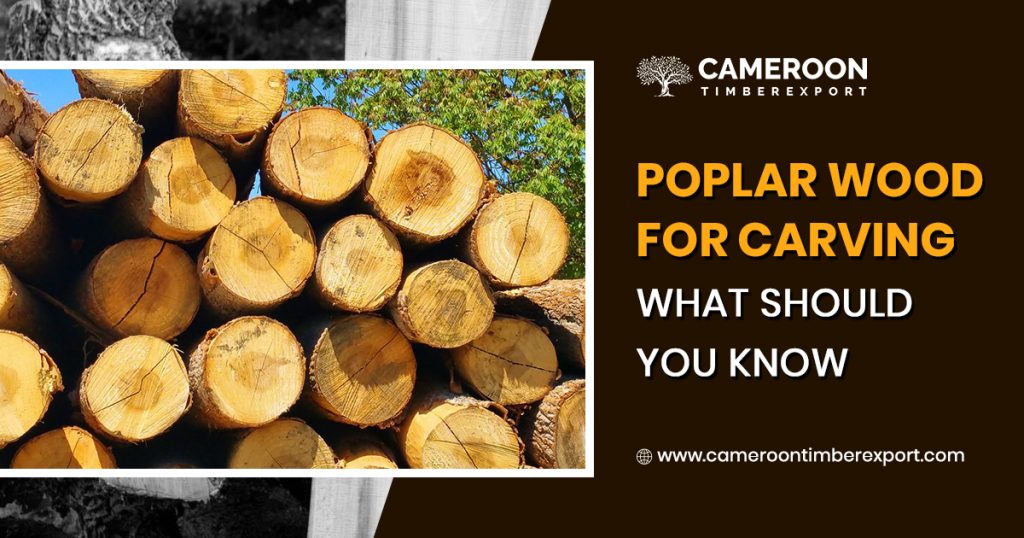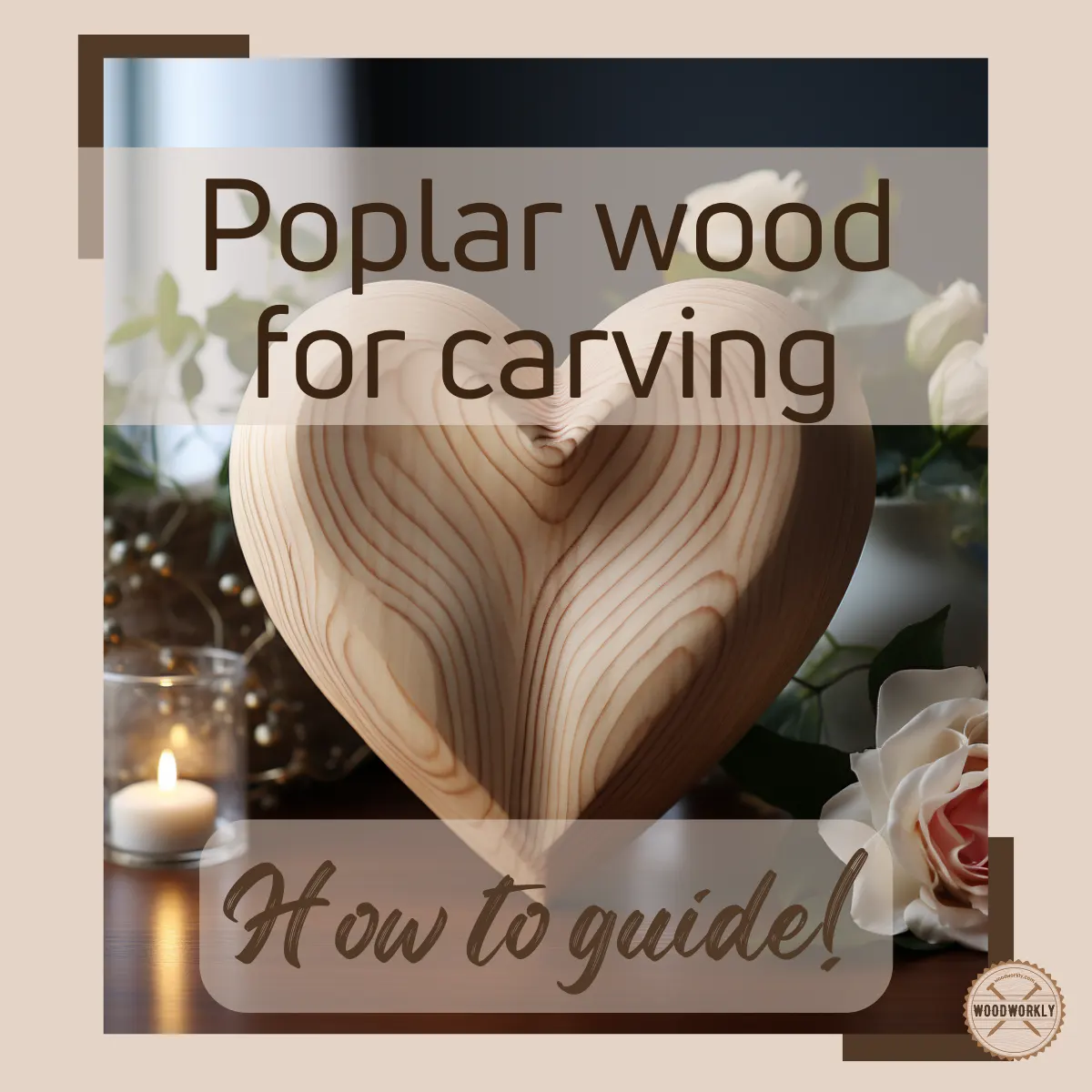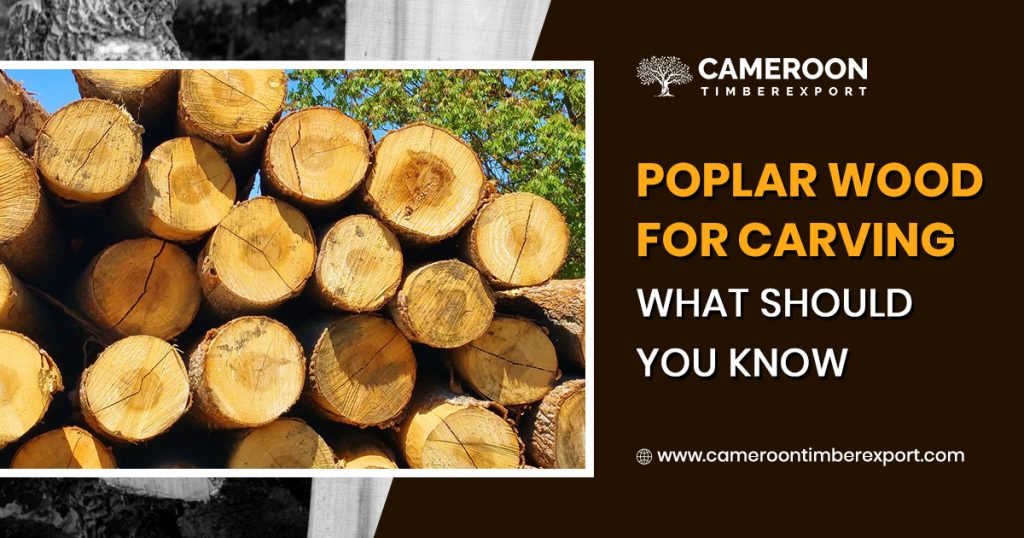If you’ve ever wondered if poplar is good for wood carving, you’re in the right place! Wood carving is a fascinating art form that allows you to create intricate designs and sculptures from a block of wood. But when it comes to choosing the right type of wood for carving, not all woods are created equal. So, let’s dive in and explore whether poplar is a good choice for your wood carving projects.
When it comes to wood carving, the choice of wood plays a crucial role in the final outcome. Poplar, known for its straight grain and relatively soft texture, can be a great option for both beginners and experienced woodcarvers alike. Its medium density allows for easier carving and shaping, making it a popular choice in the carving community.
Poplar wood offers a smooth and even surface, which makes it ideal for achieving intricate details in your carvings. Additionally, its light color provides a fantastic canvas for staining or painting your finished piece. While it may not have the same level of fine grain detail as some other woods, poplar’s affordability and availability make it a worthwhile option to explore as you embark on your wood carving journey. So, let’s grab our carving tools and delve into the world of poplar wood carving!

Is Poplar Good for Wood Carving?
Wood carving is a craft that requires the right type of wood to bring out the best results. One common wood often considered for carving projects is poplar. Poplar wood, known for its light color and smooth texture, has become popular among woodcarvers for various reasons. In this article, we will explore the qualities of poplar wood and its suitability for wood carving, as well as important tips and considerations for using it in your carving projects.
1) The Qualities of Poplar Wood for Carving
Poplar wood is a preferred choice for many woodcarvers due to its desirable qualities. Firstly, poplar has a light color that allows for the showcasing of intricate designs and details. It ranges from a pale yellowish-white to light brown, providing a neutral backdrop for carvings that can easily be stained or painted if desired.
Additionally, poplar wood has a relatively straight grain, making it easy to carve and shape. Its fine texture is smooth to the touch and produces clean cuts, allowing for precise detailing in your carvings. The wood also has a moderate density, which strikes a balance between being light enough to work with and sturdy enough to hold its shape.
Furthermore, poplar wood is readily available in many regions, making it accessible for woodcarvers of all levels. It is also affordable compared to some other types of wood commonly used in carving, making it an attractive option for those on a budget.
2) Tips for Carving Poplar Wood
While poplar wood is suitable for carving, there are a few things to keep in mind to achieve the best results. Firstly, it is important to select the right piece of wood for your project. Look for a straight and well-seasoned piece of poplar that is free from knots or defects. Knots can make the wood more difficult to carve and may affect the final outcome.
Before starting your carving, it is recommended to prepare the wood by sealing the end grain with a suitable wood sealer. This helps to prevent moisture absorption, which can lead to cracking or warping of the wood.
When carving poplar wood, it is recommended to use sharp tools to achieve clean and precise cuts. Poplar is a relatively soft wood, so sharp tools will glide through it smoothly. Take your time and work patiently, making light cuts and gradually building up the desired shape and details.
Lastly, consider using a wood finish or sealant to protect the finished carving and enhance its appearance. This can help to accentuate the natural color and grain of the poplar wood while providing a layer of protection against wear and tear.
3) Benefits of Using Poplar for Wood Carving
Using poplar wood for carving offers several benefits to woodcarvers. Firstly, as mentioned earlier, poplar wood is readily available and affordable, making it a practical choice for both beginners and experienced woodcarvers. Its accessibility means that you can easily find sources for poplar wood for your carving projects.
Additionally, poplar wood is relatively easy to work with compared to other hardwoods. Its straight grain and smooth texture make it well-suited for intricate detailing and delicate designs. The wood is also forgiving and allows for correction if any mistakes are made during the carving process.
Poplar wood is also versatile when it comes to finishing options. It can easily be stained, painted, or sealed to give your carving a personalized touch. The light color of the wood provides a great base for experimenting with different finishes, allowing you to achieve the desired aesthetic for your carving projects.
In conclusion, poplar wood is indeed a good choice for wood carving. Its light color, smooth texture, and accessibility make it a popular option among woodcarvers. By selecting the right piece of wood, using sharp tools, and paying attention to the finishing touches, you can create beautiful and intricate carvings with poplar wood. Consider exploring the possibilities of poplar in your next wood carving project and embrace the unique qualities it offers.
Key Takeaways: Is Poplar Good for Wood Carving?
- Poplar wood is a suitable choice for wood carving projects.
- It is easy to work with, making it ideal for beginners and young wood carvers.
- Poplar has a fine and even grain, allowing for smooth and detailed carving.
- It is relatively affordable compared to other types of wood commonly used for carving.
- While poplar is softer than some hardwoods, it still offers good strength and durability.
Frequently Asked Questions
When it comes to wood carving, choosing the right type of wood is essential for achieving the desired results. In this article, we will answer some commonly asked questions about poplar wood and its suitability for wood carving.
1. Is poplar a good wood for carving?
Yes, poplar is a great wood for carving, particularly for beginners. It is relatively soft and easy to work with, making it ideal for learning the basics of wood carving. Poplar wood has a fine, even grain that allows for clean and smooth cuts, resulting in beautifully detailed carvings.
However, it’s worth noting that poplar wood is not as hard as some other types of wood commonly used for carving, such as oak or walnut. It may not be suitable for intricate or highly detailed work that requires more hardness and stability.
2. What are the advantages of using poplar for wood carving?
One of the main advantages of using poplar for wood carving is its affordability. Poplar wood is relatively inexpensive compared to other popular carving woods, making it an excellent choice for those on a budget or beginners who want to practice without investing too much initially.
Additionally, poplar wood is readily available in many regions, making it easily accessible for woodworkers and carvers. It is also a lightweight wood, which can be advantageous when working on larger or more complex projects that require ease of handling.
3. Are there any disadvantages to carving with poplar wood?
While poplar wood is suitable for many carving projects, it does have a few drawbacks. One potential disadvantage is its softness. Although the softness of poplar wood can make it easier to carve, it also means that it may be more prone to denting or denting over time.
Furthermore, poplar wood is not as durable as some hardwoods, meaning that carvings made from poplar may be more susceptible to damage or wear. If you are creating heirloom or long-lasting pieces, you may want to consider using a harder wood to ensure longevity.
4. Can poplar wood be stained or finished?
Yes, poplar wood can be stained or finished to enhance its appearance. It has a light color that can vary from pale yellow to creamy white, allowing it to take stains and finishes well. Poplar’s close grain structure helps to ensure an even finish and a smooth surface.
However, it’s important to note that poplar wood may have some green or purple streaks, which can affect the stain’s final color. To achieve a more consistent finish, it is recommended to use a wood conditioner or pre-stain sealer before applying the stain.
5. What are some popular projects that can be carved from poplar wood?
Poplar wood is versatile and can be used for various carving projects. Some popular projects include relief carvings, decorative trim, small sculptures, and functional items such as spoons or bowls. Poplar’s workability and reasonable cost make it a popular choice for both novice and experienced wood carvers.
It’s worth mentioning that poplar wood can also be combined with other types of wood to create contrasting designs and visual impact. The lighter color of poplar can provide an excellent backdrop for darker or more pronounced wood grains.

Summary
If you’re interested in wood carving, poplar can be a great choice of wood. It is soft, lightweight, and easy to work with. However, there are a few things to keep in mind. Poplar may not be the best wood for intricate or detailed carvings as it can have a coarse texture. It also doesn’t have a lot of natural color or grain patterns, so you may need to add stains or finishes to enhance its appearance. Despite these limitations, poplar can still be a good option for beginners or those looking for a budget-friendly carving wood.
In conclusion, poplar can be a suitable wood for carving because of its softness and ease of working with, though it may not be ideal for intricate designs. It’s important to consider the texture and lack of natural color when choosing poplar, but with the right techniques and finishes, you can still create beautiful carvings. So, if you’re starting out or on a budget, give poplar a try and see what you can create!
